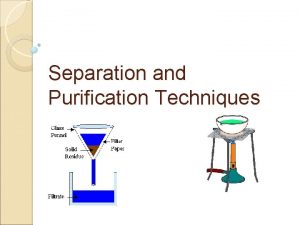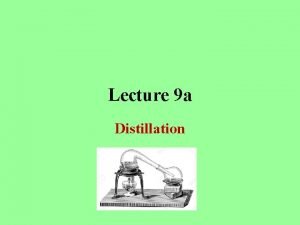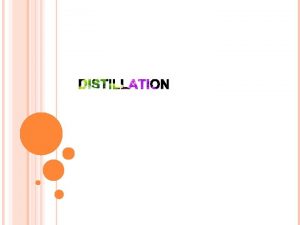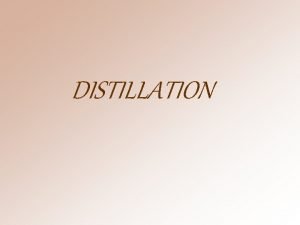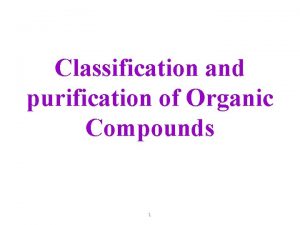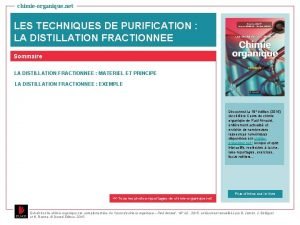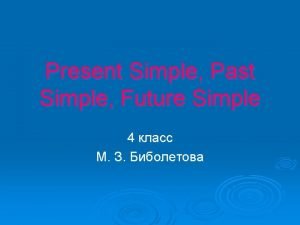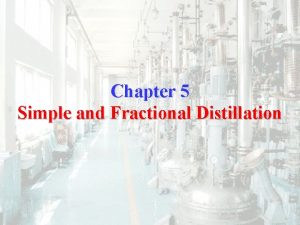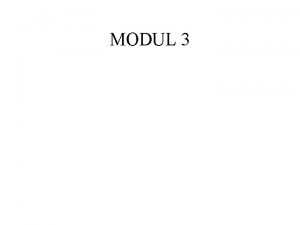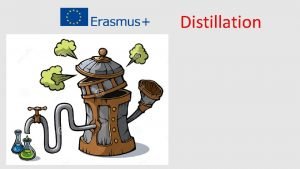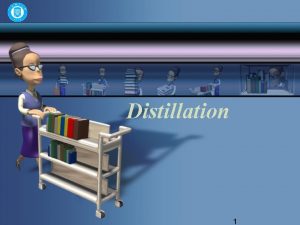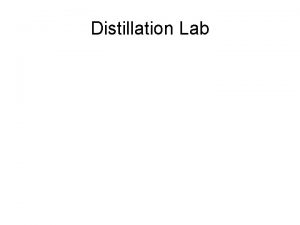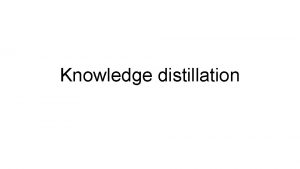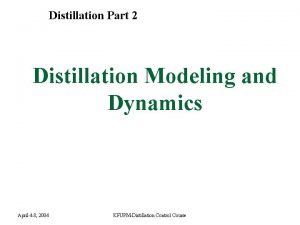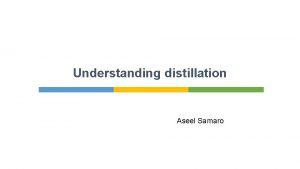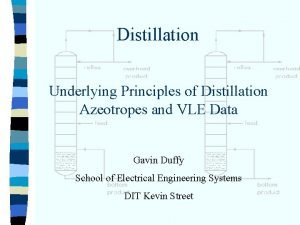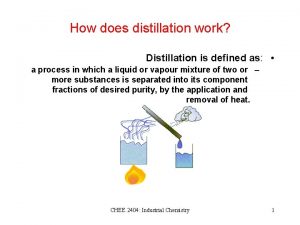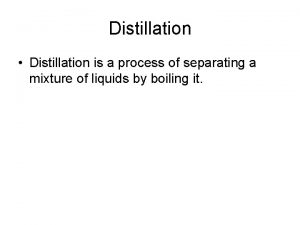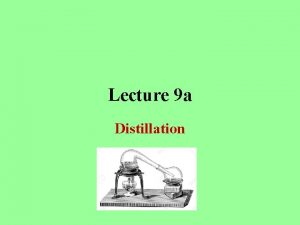Method 3 Simple Distillation When is simple distillation

















- Slides: 17

Method 3: Simple Distillation

When is simple distillation used? Simple distillation is also used to separate a solution of a solid dissolved in a liquid, and it allows both the solid and the liquid to be collected.

Simple Distillation Apparatus

Mixtures that can be separated by Simple Distillation Simple distillation is only an appropriate method of separation if the liquid has a lower boiling point than the solid, i. e. the liquid becomes a vapour before the solid. Distillation can therefore be used to separate a mixture of salt and water.

The Liebig Condenser One of the key components of the apparatus used in distillation is the Liebig condenser.

Method by which simple distillation works The method by which the distillation apparatus works is: • The mixture is heated in the distillation flask until vaporisation occurs

Method by which simple distillation works • The vapour rises up the distillation flask and as it passes into the Liebig condenser it begins to cool and condenses back to a liquid. This liquid passes down the condenser and can be collected.

Simple Distillation Facts Anti-bumping crystals are added to the mixture to assist with smooth boiling. The liquid that passes through the Liebig condenser is known as the distillate.

When is simple distillation useful? Simple distillation is a very useful method of separation if you need to collect both the solid and the liquid after separation.

Method 4: Fractional Distillation

Miscible & Immiscible Miscible liquids are liquids which are able to mix. Immiscible liquids are liquids which are unable to mix.

When is fractional distillation used? Fractional distillation is used to separate a mixture of two or more liquids which are miscible and have different boiling points which are close together.

Fractional Distillation Apparatus Questions: How is the apparatus used in fractional distillation different from that used in simple distillation? How is it similar?

Fractional Distillation Apparatus The apparatus used in fractional distillation is similar to that used in simple distillation. A fractionating column is attached to a round bottomed flask which is then attached to a Liebig condenser. Fractional distillation can be used to separate a mixture of methanol and water, since the boiling point of methanol is 580 C and that of water is 1000 C.

Method of Fractional Distillation The method by which the apparatus for fractional distillation works is: 1. The mixture boils and vapours of both liquids enter the fractionating column.

2. Vapour from the liquid with the higher boiling point condenses in the fractionating column and returns to the flask. 3. Vapour from the liquid with the lower boiling point reaches the top of the fractionating column, enters the condenser and condenses.

4. Condensed liquid drips into flask. This is the distillate. 5. Each fraction of the mixture is collected in a separate container.
 Fractional distillation vs simple distillation
Fractional distillation vs simple distillation Distillation presentation
Distillation presentation Difference between boiling and evaporation
Difference between boiling and evaporation Widely used method
Widely used method Importance of symposium for students
Importance of symposium for students Fractional distillation conclusion
Fractional distillation conclusion Differential extraction
Differential extraction Exemple de distillation simple
Exemple de distillation simple Pictures of mixtures
Pictures of mixtures Past future simple
Past future simple Simple present and simple future
Simple present and simple future Present simple present continuous past simple future simple
Present simple present continuous past simple future simple презент перфект упражнения
презент перфект упражнения Present simple, past simple, future simple
Present simple, past simple, future simple Continuous future in the past
Continuous future in the past Simple present simple past simple future
Simple present simple past simple future Simple present negativo
Simple present negativo Future simple present simple
Future simple present simple
